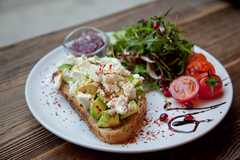Food / Global
All you can eat
Briefing
Whether tucking in to deliciously fresh market produce in Perth, seeking out a chocolate shop in Tokyo or cosying up in Berlin’s best new coffee house, we’ve travelled the world in search of the best in fine food.
Farmers’ markets
Perth
Low start-up costs and flexible working hours are making Perth’s farmers’ markets an increasingly attractive proposition for enterprising food sellers and produce-conscious chefs. Since the establishment of the Mount Claremont and Subiaco sites in 2008 and 2009 respectively, the popularity of markets has increased steadily.
Although seasonal produce is the star of the show, the marketfood scene also has its admirers. This is not just among shoppers but also cooks seeking new opportunities outside a traditional kitchen in order to earn a crust. “People are easygoing and the sellers are all happy,” says Jason Jujnovich, a former restaurant owner who now runs street-food stall Back to Balkan.
While Jujnovich is dubbing this stage of his career a “working holiday”, tales of market sellers parlaying their success into bigger things aren’t uncommon. Daragh and Trish Grier of Wild Bakery, for example, laid the foundations for their prosperous Fremantle business at the Subiaco farmers’ market. “I’m thrilled to see small-businesses succeeding,” says Sally Lewis, event organiser of the Subiaco and City of Perth Twilight Hawker markets. “But most satisfying of all is seeing the thriving communities that these markets promote.”
Distrikt Coffee
Berlin
Having moved to Berlin four years ago, British-born Sophie Hardy realised her dream of opening a coffee shop in December 2014. The full-time science teacher and her German partner Hannes Haake (both pictured) have transformed the first floor of a pre-war building in Mitte into a space offering organic food and top-notch coffee. “We source our beans from London, Paris and Berlin and serve food with a healthy slant, plus home favourites,” says Hardy.
Star dish
Dutch fat-ass tenderloin
Vesper Hotel
Noordwijk, the Netherlands
Brothers Michiel and Martijn van den Berg havetransformed a century-old building in the historic seaside town of Noordwijk into the Vesper Hotel and restaurant opened in 2014. Its unflatteringly named but delicious Dutch fat-ass tenderloin is sourced from the native cows that graze along the banks of the Maas River. With a baked Roseval potato and al dente organic carrots (bospenen), Vesper’s food is served with a view of the North Sea amid eclectic décor designed by Paris-based Studio Akkerhuis.
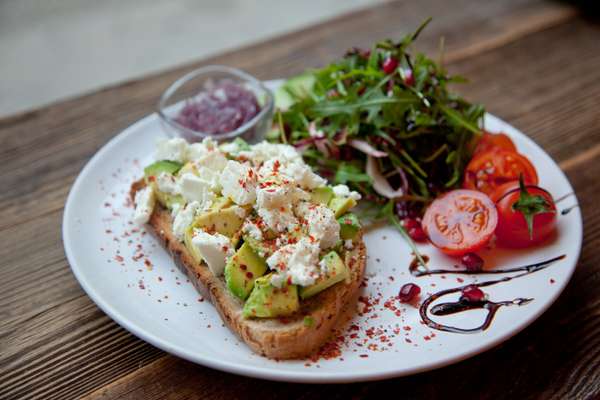
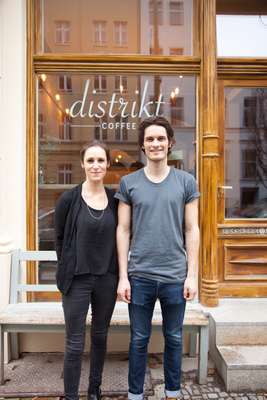
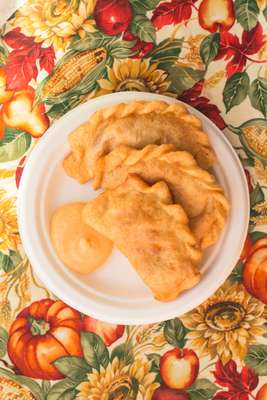
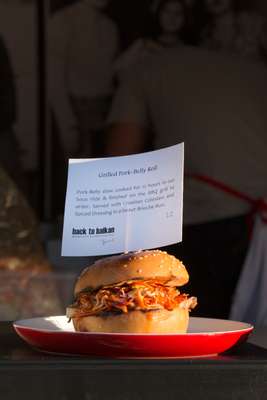

A de Acento
Mexico City
Building on the success of her three previous food shops, wine specialist Paulina Vélez opened her first restaurant in Mexico City’s trendy Condesa district in 2014. The two-storey building designed by architect Jorge Campos is light and spacious; food comes from award-winning chef Víctor Zárate, who stays true to Mexican tradition while encouraging innovation. Signature dishes include a crunchy beetroot salad with caramelised figs and Mexican vanilla-and-macadamia nut vinaigrette. Those with an appetite for more can also browse the in-house grocer for Mexican cheeses, chilli sauces and conserves – and, of course, a selection of wines picked by its oenologist owner.
Bowery Meat Company
New York
The newly opened Bowery Meat Company in New York’s East Village is the fourth and latest venture of restaurateur John McDonald and chef Josh Capon. Reinterpreting the conventional steakhouse, the roomy 140-seat restaurant is a relaxed joint with warm wooden tones and globe lighting. “The goal was to be a meat-centric restaurant, not a traditional steakhouse,” says McDonald. The evening-only menu is filled with top cuts of prime Black Angus beef from Diamond Creek Ranch in Kansas and equally delicious Colorado lamb. But welcome surprises aren’t limited to the meat menu: we’d suggest sampling the grilled cauliflower as a side.
Ormiale vineyard
Bordeaux
Founded eight years ago by artist Fabrice Domercq (pictured, seated) and designer Jasper Morrison (on left), Ormiale vineyard makes rugged red wines at its idyllic location in the Bordeaux region, 10 minutes’ drive south of Saint-Émilion. “We work with two grape varieties: a 13-year-old merlot and a 50-year-old cabernet sauvignon,” says Domercq.
No chemical herbicides are added to the vines and the whole production cycle is performed by hand, from destemming the grapes to the wax sealing of the bottles. And although the yield is small at 3,500 bottles a year, the recent addition to the team of fellow designer Marc Newson (pictured, middle) completes a talented line-up of design-minded winemakers.
Bread, Espresso
Taipei
In January 2015, popular Tokyo bakery and café Bread, Espresso & opened its first overseas outpost in Taipei. Like the original located in Tokyo’s Omotesando neighbourhood, all the bread here is made from scratch each morning. As the name suggests, the new café also serves a mean coffee using beans from Taiwanese roaster Goodman Company, which are harvested in the Alishan mountain range. Aside from well-selected Taiwanese influences, the menu reflects the simple yet delicious fare found at the Tokyo original. For now we’re more than happy snacking on the signature French toast that comes served in a cast-iron skillet with a dusting of icing sugar.
Botanic Lab
London
With its rich cookie-dough flavour it’s hard to believe Botanic Lab’s almond milk isn’t an indulgence. Yet this cold-pressed mix of almonds, honey, coconut oil, salt and vanilla is in fact a healthy option. “It’s not a diet drink in the traditional way but it does boost your metabolism,” says co-founder Rebekah Hall, an ex-investment banker who founded the London-based company in 2014 with chef Christophe Reissfelder.
Minimal
Tokyo
The chocolate business makes ¥450bn (€3.3bn) a year in Japan and its products are sold everywhere from convenience stores to rarefied boutiques. Minimal, a new chocolate shop in Tokyo, is making its own niche with reasonably priced handmade chocolate.
Founder Takatsugu Yamashita (pictured, middle), chef Masato Asahi (right) and manager Kosuke Tabuchi (left) source beans from around the world and the whole bean-to-bar process happens in-house. There are eight flavours on offer including nutty, fruity and bitter varieties. Asahi adds sugar but no other flavours; instead Minimal fine tunes the length of roasting and grinding to adjust the bar’s taste. “Our idea is to make the best of the basic ingredients: the beans,” says Yamashita. “I chose the name Minimal because we do as little as possible.”
The fruity chocolate made with beans from Vietnam has a remarkable taste of blackberries, while beans from Haiti bring a hint of almond to the mix. There’s also ice cream, roasted cocoa beans or hot chocolate to take away.
Atlantic Saltworks
Massachusetts
In 2013, Heather Ahearn and Alison Darnell toured their local Massachusetts coastline to find a patch that provides high-saline waters for the best-tasting salt possible settling on Gloucester in the state’s northeast as a base for their start-up Atlantic Saltworks. The project is helping revitalise the city’s maritime economy and we’d suggest a sprinkle of Atlantic salt to season vanilla ice cream with maple syrup: an unusual combination but a local favourite.
Relæ
Copenhagen
Having left Copenhagen’s much-fêted restaurant Noma, Sicilian-Norwegian chef Christian Puglisi (pictured, right) opened his own establishment, Relæ, in 2010. Inside the typically Danish semi-subterranean basement on the once rough Jægersborggade thoroughfare, Puglisi focuses on ridding fine dining of its fripperies. Gone are the tablecloths, silverware and needlessly expensive ingredients in favour of vegetables and more affordable cuts. “We picked up the challenge of doing a restaurant which is approachable in terms of finance, so we need to play with produce that is humble,” says Puglisi. “And, actually, you laugh louder when you don’t spend so much.”

